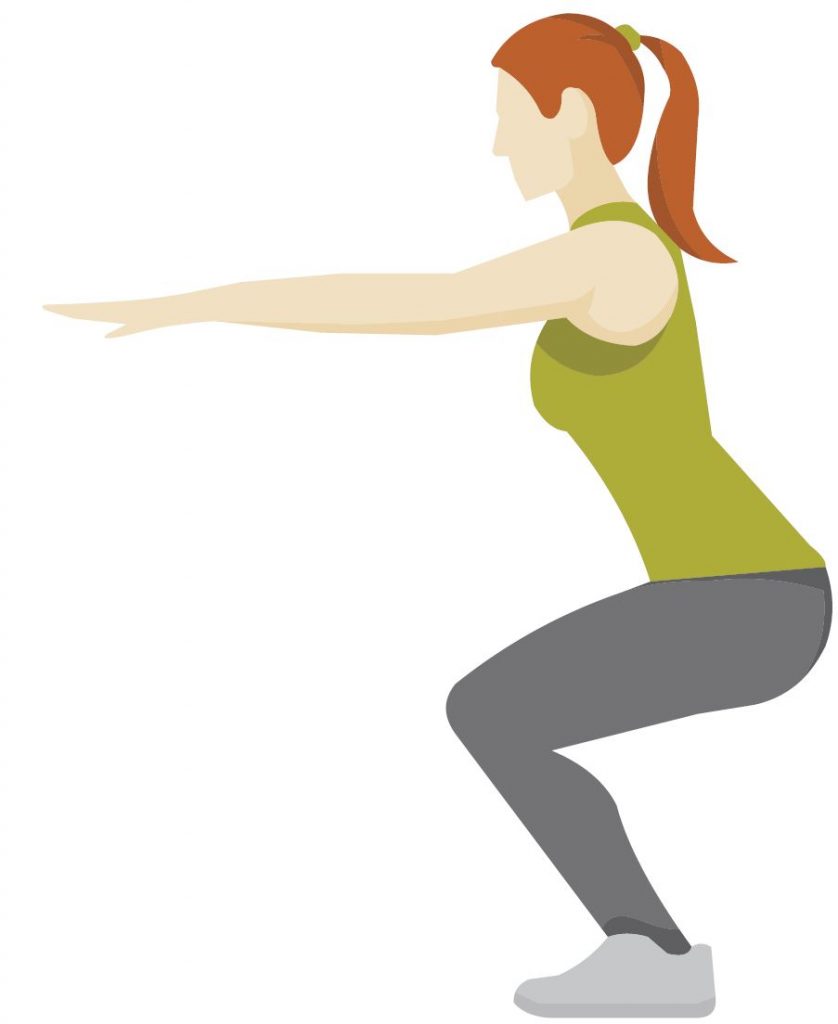Exercise Program
Choosing an exercise program
One of four levels of intensity can be followed. Most patients with cirrhosis should be able to complete the Introductory (INTRO) level of exercises.
For some persons, you may be referred to a certified exercise specialist or physiotherapist who will create a personalized exercise program for you. 
An exercise program specific for patients with cirrhosis has four components:
-
Aerobic: Improves cardiovascular health, examples are walking or swimming
-
Muscle strengthening: Resistance exercises build strength to make everyday activities easier, such as climbing stairs, shopping, and gardening
-
Flexibility: Gentle stretches improve the range of motion in joints and helps with mobility
-
Balance: Poses held for a set time improve overall stability and movement
(A) Aerobic
This can be any activity including walking, jogging, dancing, or climbing stairs. The key is to elevate the heart rate to the point where you are moderately short of breath but can still participate in a conversation. If needed, take a rest break as needed and then continue the activity. The goal is to to complete 150 minutes of aerobic activity each week. If you are just beginning to exercise, slowly build up to this by adding 5-10 minutes each week.
(B) Muscle Strengthening
Start with Intro level and then progress to P1 when you can complete 3 sets of 15 repetitions of the exercise without rest and the targeted muscles are not fatigued.
- Shoulders (lateral arm raises): Strengthens muscles and improves the range of motion in the shoulders and neck.
- Biceps (arm curls): Strengthens the bicep muscle in the upper arm and also improves hand and grip strength.
- Triceps (triceps extension): Strengthens muscles in the forearms, shoulders, chest, and lower back as well as the tricep muscles in the upper arms.
- Quadriceps (leg extensions): Improves stability when on your feet; helps blood circulation in the legs
- Hamstring (leg curls): Improves the stability of the feet and ankles when standing, walking, or climbing stairs; good for getting the blood circulating in the leg after sitting or standing for a while
- Lower Leg (calf raises): Improves the stability of the feet and ankles when standing, walking, or climbing stairs; good for getting the blood circulating in the leg after sitting or standing for a while
- Multiple Joints: Improves overall range of motion, strength balance and posture
(C) Flexibility
These are a series of static position muscle stretches. They improve overall mobility and range of motion.
(D) Balance
Improves movement, spatial awareness, and ability to recover from slipping or being bumped in crowds.
There are four levels for each exercise. Your “Exercise Prescription” will indicate which level to complete.
- Introductory (Intro) EASIEST: No equipment, can be done while lying or reclining in bed or on a couch, suitable for most patients with cirrhosis
- Progression 1 (P1): Can done while seated, good for those who may have balance issues, with or without equipment
- Progression 2 (P2): Sitting or standing with resistance bands for added muscle strengthening
- Progression 3 (P3) MOST CHALLENGING: – Balanced posture using light hand-held weights
Intensity – How hard should I be exercising?
On the Borg Scale, the target area when exercising is to be between numbers 3 and 5.
The Talk Test – Exercise to the point where you can still talk out loud but are breathing somewhat heavily.
Exercising will get easier. Keep your doctor up to date on your progress and let them know if you wish to progress to the next level. Do NOT advance without your doctor’s approval!
Click here to see the Borg Scale & Talk Test

Tips To Remember
How can you yourself exercise? Here are two pages of really useful tips created by physiotherapists and certified exercise specialists.
These tips help to incorporate exercise in your weekly routine and gives advice for coping with low energy “blah” days.
Click here to see or download exercise tips



